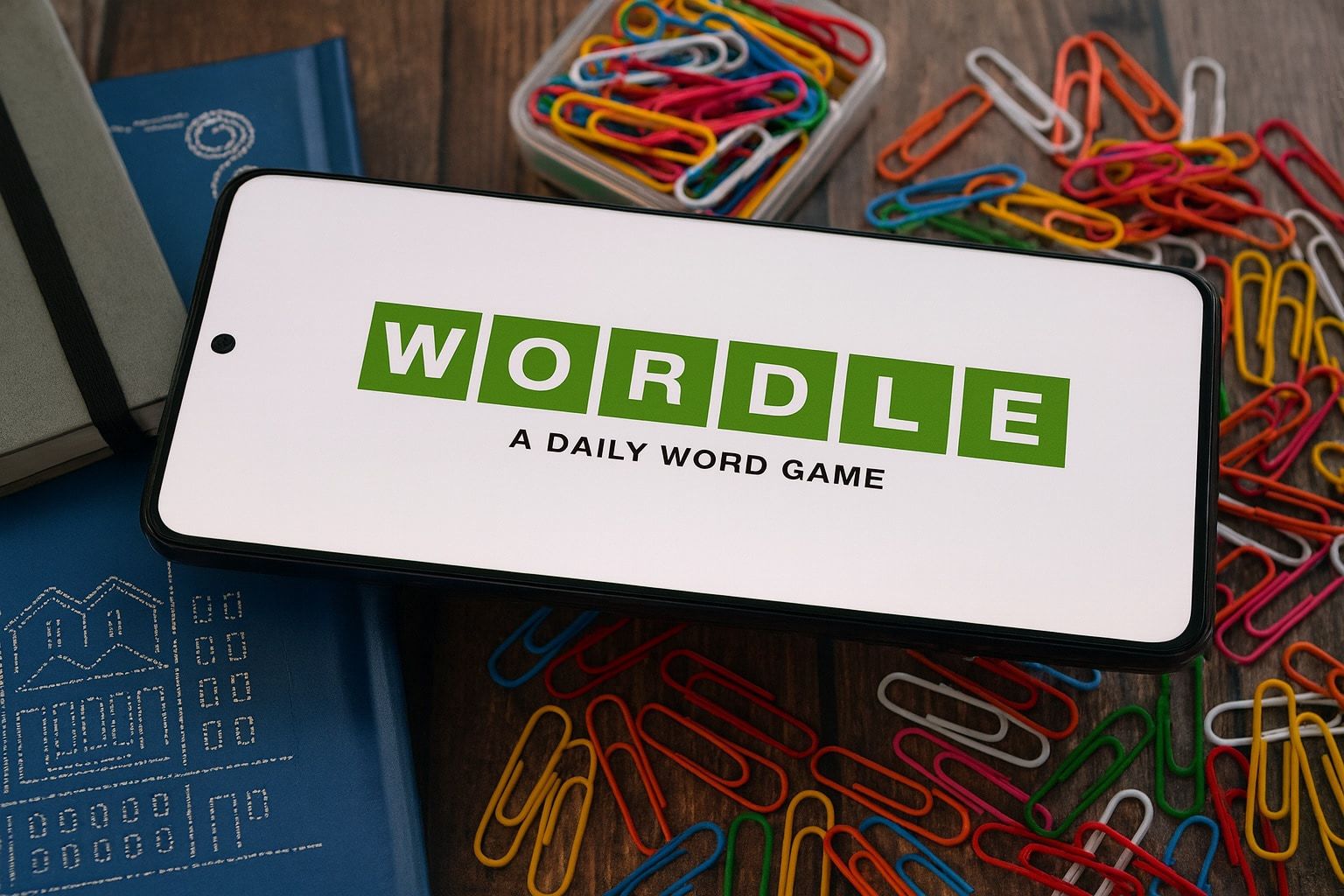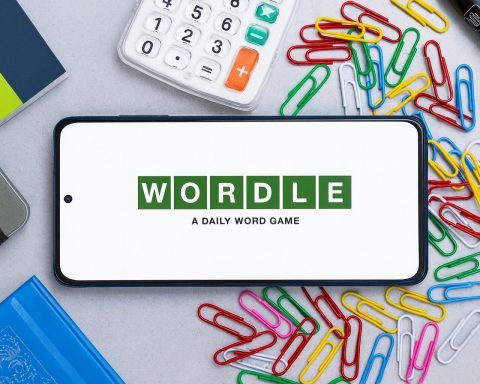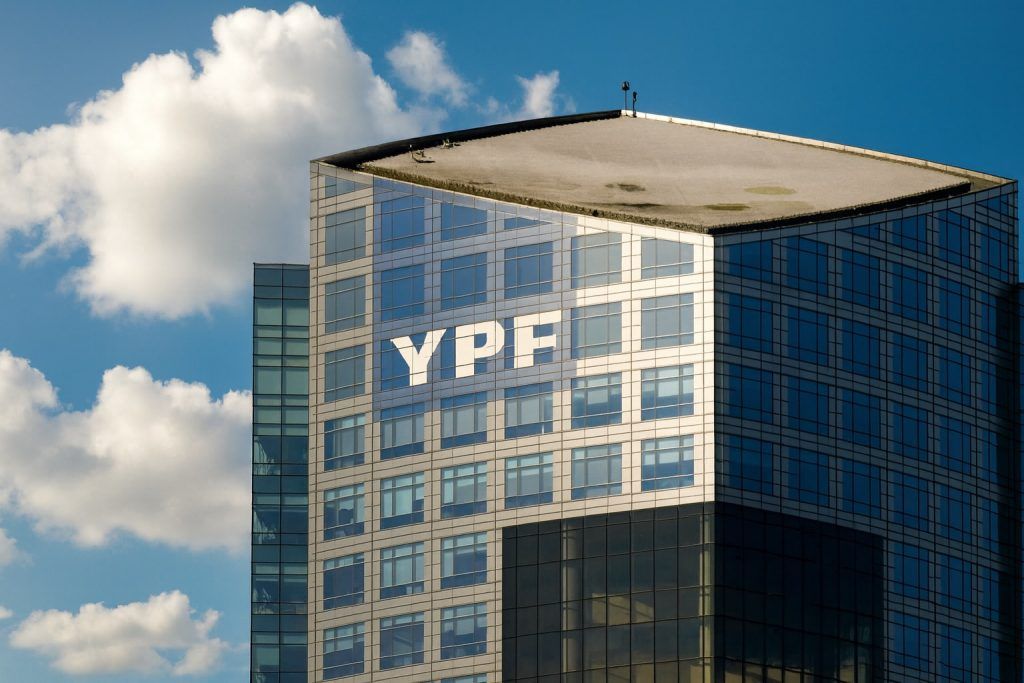- Today’s Wordle (#1591) answer for Monday, Oct. 27, 2025 is FETID. Multiple outlets confirm the five-letter solution, meaning “foul-smelling,” in today’s New York Times puzzle [1] [2]. If you haven’t solved it yet, beware spoilers ahead!
- Clue & structure: Starts with F, contains two distinct vowels (E and I), and no repeated letters, fitting the hint “unpleasantly smelly/rotting odor” [3] [4]. In other words, think of a stink – that’s the theme of today’s answer.
- Yesterday’s answer (#1590) was PLUMP – a double-P word that surprised many players [5]. After Sunday’s puzzle with a repeated consonant, today’s smelly adjective might feel uncommon but at least there are no tricky duplicate letters.
- Reset time: Wordle refreshes at midnight local time each day, giving everyone a new word – the same daily answer for all players globally [6] [7]. Solve by 11:59 pm to preserve your streak! (The game tracks streaks and missing a day or failing the puzzle will break it [8].)
- What’s new around NYT Games:
- Pips launched (Aug. 18, 2025): A new daily domino-logic puzzle (using dominoes and numeric rules) joined NYT’s lineup [9], marking the Times’ first original logic game – very different from Wordle’s word play.
- Mini Crossword paywalled (Aug. 27, 2025): The popular Mini Crossword, free for over a decade, moved behind a paywall for NYT Games subscribers only [10]. The decision sparked frustration among loyal daily solvers (“Day ruined,” one fan vented) [11].
- Crossplay (beta): NYT’s Scrabble-style multiplayer game Crossplay began testing as a separate app (launched in New Zealand). The Times revealed its puzzles were played 11.1 billion times in 2024 (Wordle alone 5.3 billion), underscoring why games are a strategic focus for the company [12].
- Wordle Archive (subscriber feature): In 2024 NYT Games rolled out an official Wordle Archive for paid subscribers, unlocking 1,000+ past Wordles to play at any time [13]. It’s a treasure trove for practice and nostalgia, though casual players still only get one puzzle per day.
- Wordle on Discord: Wordle is now an official Discord Activity, licensed by NYT – meaning you can play the same daily Wordle inside Discord with friends [14]. (The Discord version uses the exact same answer as the NYT app/website each day [15], so no spoilers in chat!)
- Subscriptions: The Times introduced new family subscription plans in September, including a “Games Family” plan for about $10/month that lets up to 4 people share full access to NYT Games [16] [17]. It’s aimed at boosting engagement (family plan users “stay longer and pay more over time,” says the NYT) and helping reach the company’s 15-million subscriber goal for 2027 [18] [19].
Today’s puzzle at a glance (mild spoilers first)
One-line clue: Rotten odor. If you zeroed in on a word describing a nasty smell, you were on the right track. Today’s Wordle answer is indeed FETID [20] (as in, “a fetid smell”).
Many players found this puzzle tricky – after all, “fetid” isn’t a term most of us use in everyday conversation [21]. According to the New York Times’ own WordleBot tool, the average player needed about 4.2 guesses to solve Wordle #1591 (slightly above the usual ~4 guesses) [22]. The word’s pattern, however, is fair: there are no duplicate letters and it contains two common vowels. By comparison, yesterday’s puzzle PLUMP (#1590) threw people off with a repeated consonant, and last week’s “could-break-your-streak” challenge TUBER (#1588) had an odd letter mix. [23] [24] Today’s malodorous answer might be an uncommon word, but once solvers sniffed out the “F” and placed the E and I, the remaining letters tended to fall into place.
Context: The Wordle editors often balance difficult words with easier ones. After Sunday’s double-P PLUMP and other recent stumpers, a straightforward vowel-consonant mix like FETID was beatable for those who caught the theme. “There will always be the occasional day where the answer is…a word obscure enough to send everyone rushing off to a dictionary,” NYT puzzle editor Tracy Bennett has noted, but overall the daily answers are still a mix of common terms and tougher challenges [25]. Today’s answer falls into the latter category – an uncommon word – yet not an unfair one. (Fun fact: just 10 days ago, the answer was “GROSS,” another five-letter word for “smelly” [26]. Coincidence or a stinky theme from the editors? 😉)
How to solve #1591 efficiently (and win more often)
- Start with smart openers. As always, choosing a strategic first guess can make or break your game. WordleBot’s recommended openers (like SLATE, CRANE or TRACE) are popular because they contain common letters and vowels [27]. For instance, one expert noted that using ORATE as a start turned two letters (T and E) yellow and left 87 possible solutions – whereas an optimal guess like DEALT would have cut it to just 5 remaining words [28]. The takeaway: begin with a word that covers frequent consonants and multiple vowels, to quickly narrow down possibilities.
- Identify the vowels early. A good strategy for a word like FETID, which has two vowels, is to confirm those vowels as soon as possible. Many players systematically test A, E, I, O, U in their first few guesses – and with good reason [29]. Once you know which vowels are in play (here E and I), you can slot them into different positions. In today’s puzzle, finding the E and I helped constrain the solution pattern (🟩🟨🟨🟩🟩 by the third guess for some) and guided solvers toward the answer. As a general rule, figure out the vowels, then worry about placing them correctly [30].
- Don’t ignore uncommon letters. By mid-game, if your usual alphabet soup isn’t yielding results, consider less-common letters. In Wordle #1591, many solvers tried the “usual suspects” (like R, S, N, L, C, etc.) only to realize the answer hid a rarer consonant: F. The letter F isn’t among the top ten most frequent Wordle letters, but it was the key here. Savvy players know that if common letters aren’t working out, it might be time to fish in the darker corners of the alphabet (think F, J, K, V, Z…). Today’s puzzle rewarded those willing to gamble on a hunch – for example, guessing “FIEND” or “LEFTY” would reveal the pivotal F. In short, be flexible: sometimes the winning letter is one you least expect.
- Remember the game’s spirit. While strategy is important, so is having fun. Wordle’s creator Josh Wardle has said he designed it to be a brief, enjoyable daily ritual – “a game that was three minutes of your time a day” [31]. Don’t overthink it. Win or lose, each puzzle is meant to be a light mental snack, not a full meal. As one puzzle expert quipped, Wordle is not getting harder over time – our expectations might be getting higher! [32] So keep your guesses in perspective, and enjoy the ride. Tomorrow is always a new Wordle!
What changed around Wordle & NYT Games recently (news you can use)
- NYT launches new games like Pips. In August, The New York Times added Pips, a daily domino-based logic puzzle, to its Games lineup [33]. This marks NYT’s first foray into numbers puzzles – imagine a mix of Sudoku and dominoes. The game had a beta run in early 2025 and officially rolled out on Aug. 18. With three difficulty levels daily and no guessing of words required, Pips appeals to a different crowd (or Wordle fans looking for an extra brain workout). It’s available on the NYT Games app and web, though notably behind the subscription – part of the Times’ push to broaden its puzzle portfolio.
- Mini Crossword goes subscription-only. One of NYT’s most popular bite-sized puzzles, the Mini Crossword, was moved behind a paywall as of Aug. 27 [34]. After over 10 years free, the Mini now requires a Games or All Access subscription to play. The reaction from devotees was swift and unhappy – social media and Reddit lit up with complaints, with one user lamenting that the change “just obliterated my morning routine” [35]. The NYT acknowledged the discontent but defended the move, saying it reflects their belief that “all of our journalism, including Games, is worth paying for” [36]. For now, other daily puzzles like Wordle remain free, but the Mini’s paywall is a clear signal of the Times’ subscription strategy.
- “Crossplay” multiplayer word game in beta. The Times is experimenting with a Scrabble-like multiplayer game codenamed Crossplay. Instead of adding it to the main NYT Games app, they soft-launched Crossplay as a standalone app (testing in New Zealand as of June) [37]. This is part of NYT’s effort to capture gamers who enjoy words competitively. While still in beta, Crossplay hints at NYT Games’ ambitions beyond solo puzzles. Notably, in sharing news of Crossplay, the Times also revealed some stunning stats: NYT puzzles were played 11.1 billion times in 2024, and Wordle alone accounted for 5.3 billion of those plays [38]. Little wonder NYT considers games a “strategic focus” for growth [39]. A successful multiplayer offering could further boost engagement – and subscriptions – especially among friend groups or families who want to compete with each other in the NYT ecosystem.
- Wordle Archive for subscribers. Ever wish you could go back and play old Wordles you missed? Now you can – if you subscribe. In May 2024, NYT Games launched an official Wordle Archive feature that lets Games and All-Access subscribers access over 1,000 past Wordle puzzles on demand [40]. It’s essentially a “time machine” for Wordle, letting newer players experience the older puzzles (or veterans to replay favorites). The rollout was staggered over a few months [41], but by now most subscribers have it on web and mobile. The archive doesn’t count toward your daily streak, of course – it’s more for practice or nostalgia. Still, it adds value to the Games subscription. The Times has indicated it sees features like this as a way to keep puzzle die-hards happy and subscribed.
- Wordle comes to Discord. In mid-2025, Wordle made an official leap to Discord, the chat platform popular among gaming communities. Discord partnered with NYT to add Wordle as a built-in Activity that users can launch in any server or group chat [42]. Importantly, the Discord version uses the same daily answer as the NYT’s own Wordle [43] – it’s essentially an authorized mirror of the game. This means friends in a Discord server can each do the puzzle and compare results in real-time, without leaving the app. You can even hit a “Share” button to post your score to the chat once you’ve solved it [44]. The integration has been a hit in many Wordle communities: it turns Wordle into a more social, multiplayer experience, where you can race your pals or commiserate on tough days. And for NYT, it’s a savvy move – meeting audiences where they are (Discord reports over 150 million active users) could rope in new players who might eventually convert into NYT Games subscribers. The Wordle Discord Activity is free to play (no NYT login needed) [45], at least for now, as NYT’s priority is to keep Wordle ubiquitous and viral.
- NYT bets on “family” plans and bundles. Beyond the games themselves, the Times is tweaking its subscription model. In September, it introduced Family Plan subscriptions – including a Games Family plan for $10/month that gives up to 4 people full access to all NYT games [46]. The idea is to encourage households (or any group of friends/family) to sign up together, increasing overall reach. Each family plan counts as two subscribers in NYT’s metrics (even if four users are on it) [47], a creative accounting that helps inch toward their goal of 15 million digital subscribers by 2027. Executives say family plan users are “much more likely to stay with us” longer [48] [49]. This echoes a broader trend: NYT has been bundling news, games, cooking, and more into value bundles to drive growth [50]. As of Q2 2025, over 50% of NYT’s ~11.9 million subscribers were on multi-product bundles [51] – and the company hit record-high revenues, crediting offerings like The Athletic and Wordle for attracting audiences beyond news [52] [53]. In short, expect the Times to keep cross-promoting games with its core news product, leveraging beloved games like Wordle as a gateway to its broader subscription bundle.
Wordle’s impact on NYT’s bottom line and the road ahead
Wordle may be a simple game, but it’s playing an increasingly important role in The New York Times Company’s business strategy. When the Times bought Wordle in early 2022 for a low seven-figure sum, few guessed how much of a cornerstone it would become for the media company. Fast forward to 2025: NYT’s digital subscription base has surged to nearly 12 million, and leadership cites games like Wordle as a key factor in attracting and retaining subscribers [54] [55]. The Times has “leaned heavily” on offerings beyond news – including the crossword, The Athletic (sports), Wirecutter (product reviews), and yes, Wordle – to draw in users at a time when interest in traditional news can be fickle [56].
This strategy is paying off. In August 2025, the Times reported stronger-than-expected earnings: subscription revenue jumped ~15%, and the company’s stock (NYSE: NYT) spiked nearly 14% to an all-time high on the news [57]. (For context, NYT shares hit around $62 in early August, their highest ever, before settling in the high-$50s range by late October [58].) Analysts applauded the Times for successfully bundling news with “lifestyle” content – and Wordle was specifically singled out as a headline success in the games category [59]. In Q2’25, the Times added 230,000 new digital subscribers, and a good number of those came in through the Games + All Access bundle, which offers the full suite of puzzles [60] [61]. The company’s CEO, Meredith Kopit Levien, noted that over half of all subscribers are now on multi-product plans (e.g. News+Games), calling bundle subscribers “more engaged, longer tenured and more valuable” over time [62]. In other words, someone who starts off hooked on Wordle or the Crossword is likely to stick around and explore other NYT offerings – exactly what the Times is banking on.
To keep that momentum, NYT isn’t standing still on the gaming front. We’ve seen them add new games (like Pips and Connections), experiment with social play (Discord, Crossplay beta), and introduce features like the Wordle Archive to deepen engagement. They’re even exploring external partnerships – for instance, Amazon struck a deal to license NYT content (potentially including puzzles) for its Alexa AI, netting the Times $20+ million a year [63]. On the subscription side, the family plans launched in September show NYT’s willingness to innovate on pricing to rope in entire households (or friend groups) into the fold [64] [65].
What’s the forecast? In the near term, NYT expects continued growth – it projected 8–10% higher subscription revenue in the upcoming quarter, above analyst estimates [66]. A busy news cycle (e.g. U.S. election season) will help on the news side, but the steady drumbeat of puzzle and game enhancements is its own engine of growth. Every time Wordle trends on social media (be it a hard puzzle like “FETID” causing chatter, or a streak reset scare during an outage [67]), it’s essentially free advertising for NYT Games. The Times knows this and aims to keep Wordle’s cultural momentum going. They’ve stated a bold goal of 15 million total subscribers by 2027 [68], and a good chunk of those are expected to come from people attracted by non-news content. As one media analyst put it, “Our strategy is working” [69] – the Times has transformed from a traditional newsroom into a diversified media platform where a simple daily puzzle can bolster the bottom line.
Of course, challenges remain. Some hardcore fans bristle at the creeping monetization of puzzles (the Mini Crossword paywall being one flashpoint [70]). And competitors/imitators lurk in the wings – there’s no shortage of Wordle clones and alternative daily puzzles vying for attention. The Times will have to balance monetization with accessibility to keep its huge puzzle audience happy. There’s also the human factor: the Times’ tech workers (including those who maintain these games) have been pushing for better contracts – a strike by the NYT Tech Guild in November 2025 even led them to urge readers not to play NYT games like Wordle during the walkout [71] [72]. Such labor disputes, if unresolved, could temporarily disrupt NYT’s gaming streak.
Still, the overall trajectory for Wordle and NYT Games appears strong. The daily ritual of Wordle is now ingrained in millions of people’s mornings, and the Times is determined to make it a gateway to something bigger. As NYT Games boss Jonathan Knight has hinted, they see puzzles as a way to “create a daily habit” and then offer more on top of that [73]. In plain terms: today you come for Wordle, tomorrow you might stay for a crossword, a recipe, or a news podcast. And with the community aspect growing (group solves on Discord, family leaderboards, etc.), Wordle is evolving from a solitary pastime to a social experience – all under the NYT umbrella.
Bottom line: Wordle’s smelly challenge today (FETID, indeed) is a reminder that the game still has surprises up its sleeve. Nearly two years since its NYT debut, Wordle continues to engage, frustrate, and delight a global audience – and in doing so, it’s become far more than a game. It’s now a pillar of The New York Times’ digital strategy, a driver of subscriptions, and a cultural touchstone in its own right. Not bad for a five-letter word game invented for fun. So next time you’re scratching your head over a tricky Wordle (and perhaps cursing Tracy Bennett’s word list), remember: you’re part of something bigger. A little green-and-yellow grid that started as a pandemic-era novelty is now helping shape the future of a 172-year-old news organization [74]. And that’s a plot twist few could have predicted.
“When we bought Wordle, our vision was to grow an audience with a game that’s engaging and delightful,” NYT CEO Kopit Levien said recently. “It’s fulfilling that promise” – one puzzle at a time. [75] [76]
Sources: The New York Times, CNET, Tom’s Guide, Forbes, PC Gamer, Today.com, TechRadar, TS2 [77] [78] [79] [80] [81] [82] [83] [84] [85] [86] [87] [88] [89] [90] [91] (among others).
References
1. www.tomsguide.com, 2. www.pcgamer.com, 3. www.pcgamer.com, 4. www.tomsguide.com, 5. www.tomsguide.com, 6. dotesports.com, 7. www.businessinsider.com, 8. www.businessinsider.com, 9. nytpips.com, 10. people.com, 11. people.com, 12. www.theverge.com, 13. ts2.tech, 14. support-apps.discord.com, 15. support-apps.discord.com, 16. www.axios.com, 17. www.axios.com, 18. www.reuters.com, 19. www.axios.com, 20. www.pcgamer.com, 21. www.tomsguide.com, 22. www.tomsguide.com, 23. www.pcgamer.com, 24. www.tomsguide.com, 25. www.pcgamer.com, 26. www.pcgamer.com, 27. www.pcgamer.com, 28. www.tomsguide.com, 29. www.tomsguide.com, 30. www.pcgamer.com, 31. ts2.tech, 32. www.pcgamer.com, 33. nytpips.com, 34. people.com, 35. people.com, 36. people.com, 37. www.theverge.com, 38. www.theverge.com, 39. ts2.tech, 40. www.theverge.com, 41. www.theverge.com, 42. support-apps.discord.com, 43. support-apps.discord.com, 44. support-apps.discord.com, 45. support-apps.discord.com, 46. www.axios.com, 47. www.axios.com, 48. www.axios.com, 49. www.axios.com, 50. www.reuters.com, 51. www.reuters.com, 52. www.reuters.com, 53. www.reuters.com, 54. www.reuters.com, 55. www.reuters.com, 56. www.reuters.com, 57. www.reuters.com, 58. stockanalysis.com, 59. www.reuters.com, 60. www.reuters.com, 61. www.reuters.com, 62. www.reuters.com, 63. www.reuters.com, 64. www.axios.com, 65. www.axios.com, 66. www.reuters.com, 67. www.businessinsider.com, 68. www.axios.com, 69. www.reuters.com, 70. people.com, 71. www.fastcompany.com, 72. www.fastcompany.com, 73. www.reddit.com, 74. www.reuters.com, 75. www.reuters.com, 76. www.reuters.com, 77. www.tomsguide.com, 78. www.pcgamer.com, 79. www.tomsguide.com, 80. dotesports.com, 81. www.businessinsider.com, 82. nytpips.com, 83. people.com, 84. people.com, 85. www.theverge.com, 86. ts2.tech, 87. support-apps.discord.com, 88. www.axios.com, 89. www.reuters.com, 90. www.reuters.com, 91. www.pcgamer.com



